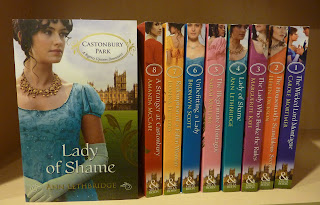This year our explorations started from Salcombe in Devon. We stayed in a hotel on South Sands. We only had to cross a narrow road to get to the sand.
On the beach we were able to pick up the ferry into town. Much easier than driving on the roads you saw on the blog yesterday.
This is a view from the headland just beyond our hotel. I have to say, it was a picture perfect day in Devon when we walked along the road up to the top of the hill. Such a pretty coast land.
This blog is not really about the seaside, but I was so pleased with this view, I thought it made a nice opening view.

Buckland Abbey, was our first port of call (keeping to our seaside theme) The GPS sent us on more of those brilliantly narrow roads enclosed in high hedges, and it was a bit like being lost at sea. However, the journey through the countryside was as lovely as it was terrifying every time a car came the other way.
Originally a Cistercian abbey, the property was sold to Sir Richard Grenville during the Dissolution by Henry VIII. The view here is of the south front and its origins can clearly be seen.
It was later acquired by Sir Francis Drake and remained in that family until 1940.
As usual, it is the late Georgian era of the house that interests me most, though it is hard to deny the fascination for one of England's heroes, Sir Frances Drake. Perhaps one day I will venture a story in those earlier times. This is one of the views a lady or gentleman in our era would have enjoyed. but Buckland was a farm when it was first built, to feed the monks and provide its wealth, and it was a farm during the Regency.
At first glance, this grand building might appear to be the outside of a church, but step inside and it is a completely different story.
It is in fact a barn. Known as the great barn and built by the monks it continued to be used throughout the centuries for the winnowing and storage of threshed corn (wheat, oats, barley).
The large door in the centre on this side of the building is matches by another on the opposite side, both havingt an upper pigeon loft, which just sneaks into my picture. Those doors were set opposite each other to create a cross-draught to help with winnowing. In 1792 thee additional doors were added at the ends of the building, which because it was too narrow for a wagon to turn around inside, allowed them to be driven from one end to the other. Previously the winnowed corn had to be flung from hand to hand to be stored at the far ends of the building. Here is a picture of the inside taken from one end and then the other.The narrow windows were for ventilation


And that wonderful contraption in the corner on the right - a cider press. It was certainly in operation during the Regency because it is recorded that the original wooden screw was replace by an iron one in 1815. The journals from 1795 record the consumption of 26 butts and one hogshed of cider during the course of the year, or approximately 3,000 gallons. The apples were grown on the estate, so it would make sense that it would be a preferred beverage.
It is thought that the arch-braced oak roof might have been thatched originally. It is hard to describe just how large this building is, but I think that the size of my brother in law at the far end of the building might just give you a sense of it. While there is a concrete floor in here now, until the 1950's it was beaten earth.
The next time we visit we will head towards the house, but in the meantime I will leave you with this picture of a medieval horse trough come planter, which I found enchanting. Until next time, Happy rambles.





















































